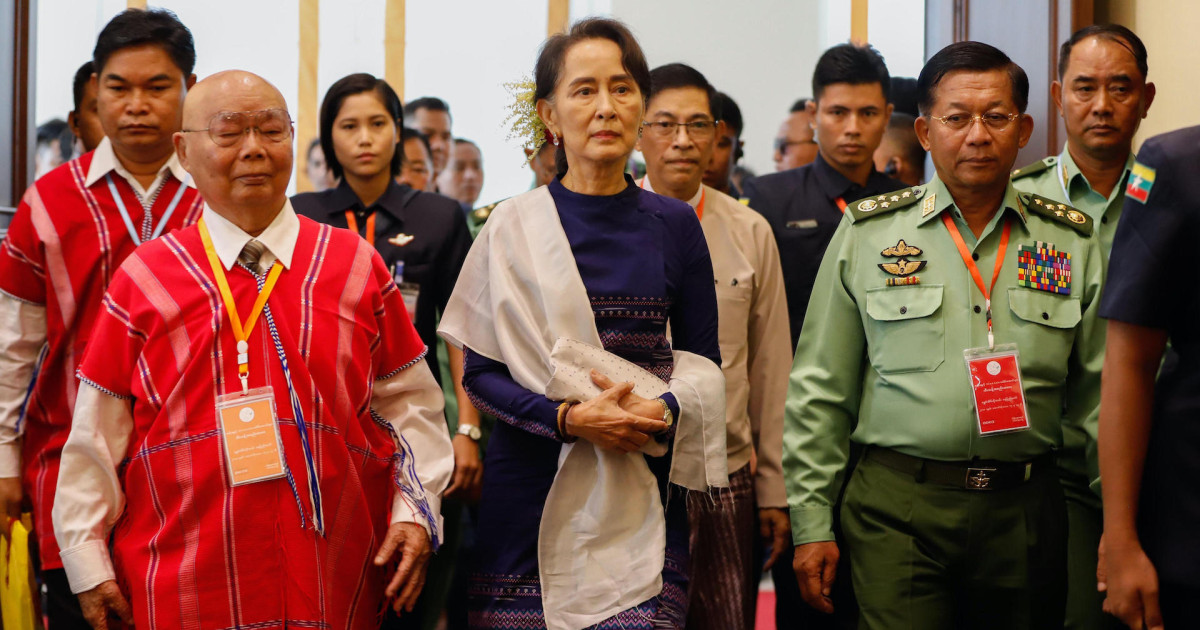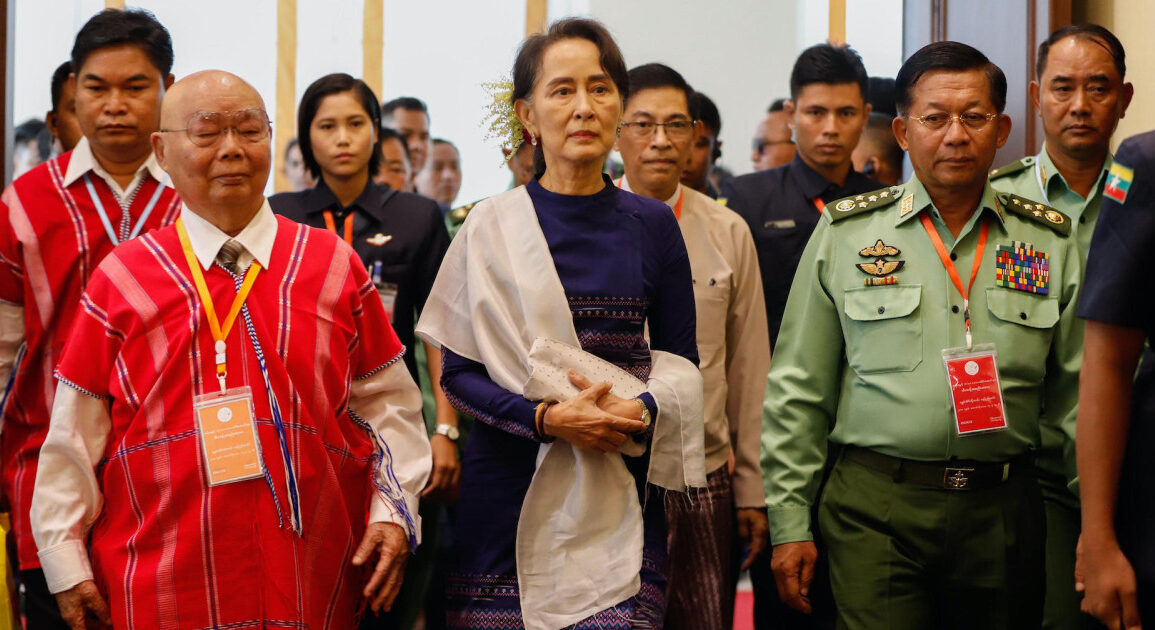
Given the scale of crisis, it is vital that a united response is developed which supports national healing rather than exacerbates division. It is for Myanmar’s peoples to determine their political future. But, in support of this, human rights protections are essential, and the perpetrators of violations on all sides must be held accountable if lasting peace and justice are to be achieved. In any conflict resolution path, accountability must be at the heart of peace-building. This has been demonstrably missing until now. To date, however, there is little indication of lessons learned. Despite the depth of humanitarian emergency, there has been no indication of a cohesive strategy to address the challenges of national breakdown, whether by the United Nations, ASEAN or other governments and international institutions.
The same imperatives are also essential in any international efforts to build a future peace process. While peace is required, a new process may well be considered inappropriate in the circumstances of coup d’état and repression. New realities should be explored, including those that reflect the role of youth and social dynamics driving elite-level political change, the momentum supporting federal democratic reform, and agreements among stakeholder parties that go beyond the agenda of the 21st Century Panglong Conference. After decades of conflict and military rule, it needs to be recognised that fundamental mistakes were made in support for the NCA in the hopes for rapid change after the accord was signed.
Manifestly, a different and broad-based approach has long been overdue. Since the coup, however, different international representatives have already sought to initiate talks between select groupings, including between the SAC and preferred EAOs, as if this will be enough to build a peace process that is just and equitable for the country. It is critical that such errors are not repeated once again. Simply continuing the same ceasefire practices, tinkering with accord guidelines and mechanisms, or changing faces around the NCA or other peace talk tables will never be sufficient. Most importantly, talks that exclude current major stakeholders or that primarily serve to reduce national and international pressure on the SAC to accede to the public’s demands for meaningful political change will never be enough, and indeed may instead further postpone the time when nationwide peace could become achievable.
In this respect, Myanmar is not unique. After the ending of the Cold War, aid became a Western response to conflict. But this, in itself, does not provide the platform for peace and reform. Rather, it may entrench division and an unrepresentative elite in power. Too often the word ‘transition’ has been invoked as a panacea during the last three decades without understanding the political context and causes of state failure. At best, peace processes in Myanmar have frozen conflicts without opening the way to political solutions. Sustainable peace requires political agreement and compromise. In contrast, approaches that only serve to strengthen the state and existing security apparatus will cause resistance among the wider population, feed community grievances and delay the opportunity for meaningful change.
In Myanmar, a legacy of failure has built up during the past decade that overshadows the NCA and peace process in five key areas: military dominance, non-inclusion, lack of implementation, lack of accomplishment, and lack of political will. After decades of conflict, all sides must take responsibility for their actions. But standing at the centre of these obstacles has always been the Tatmadaw. All too often, international actors have fallen for the illusion of a ‘normative’ state, which can be reformed, without recognising that the Tatmadaw has continued to dominate central government for more than half a century, claiming ‘prerogative’ powers for itself and intruding into every aspect of national life.**
In the aftermath of the 2021 coup, the evidence is clear. Under the 2008 constitution, the Defence Services already enjoyed sweeping powers. But Tatmadaw leaders operate well beyond these parameters, including arbitrary arrests, extrajudicial killings, land seizures, resource exploitation, paramilitary deployments, and political manipulation in favour of its own party, the USDP. As long as these practices continue, the NCA or any similar peace process can never be an instrument for national reconciliation and democratic reform. Transparency, inclusion, understanding, compromise and dialogue have always been essential steps in any meaningful process towards political transformation and lasting peace.
On a cautionary note, precedent warns that the Tatmadaw leadership may continue to employ an ad hoc mixture of stratagems of political repression and ethnic ceasefires – bilateral, unilateral and NCA – as means to try and maintain central authority. In essence, the NCA, which had been used as a process to extend state control, is now being used to attempt to cling on to power – not as a gateway to political reform. As history has repeatedly shown, military-imposed systems will never achieve inclusive, just or sustainable solutions in the country. If the government does not represent the people, why should the people support it? Headed by a hermetic clique of ruling generals, the Tatmadaw leadership represents a Bamar-centric elite and a narrow nationalist view of the world. The question, then, remains for how much longer they can continue to find, persuade or coerce sufficient support to maintain such dominant position without long-needed reform.
Myanmar today is a land in grave suffering and civil war. A decade after a new peace process began, the NCA did not lead to conflict resolution; it did not build the foundations for peace; and it did not lead to agreement for genuine political reforms to address the root causes of conflict and national instability. At the same time, the political landscape is far from static, and the polarisations in politics and society run deep. While military rule continues in Nay Pyi Taw, a diversity of ethnic armed movements remains in control of extensive territories, presenting very different visions for the future of the country. Adding to the complexity, there are a further cast of conflict actors in the wake of the new divisions created by the coup, claiming the right to be in the seat of government. These are presently symbolised by the SAC, NLD and NUG, while EAOs – in a number of alliances and positions – also demand that their voices are included if solutions are to be achieved. In any new peace process, these contested dynamics must be taken on board.
A critical moment in post-colonial history has been reached. Hopes for better change still remain, and the struggle to shape Myanmar’s destiny is far from over. Shaken by the 2021 coup, there is a willingness among diverse parties to look at the challenges of conflict resolution anew, and there is a resolve that young people today will be the first generation to enjoy nationwide peace. The needs for reform are greater than simply regime change, requiring a federal democratic system of governance which, as the 1947 Panglong Agreement set out, is based upon the equality and union of all peoples.
A political process towards peace, taking account of experiences in the past, can be a key element in such change. But to achieve this, the politics of exclusion must end and a fundamental change in political mind-set are essential. Political transformation, including sustainable and inclusive peace, are urgently required today.
* Martin Smith and Jason Gelbort, The Nationwide Ceasefire Agreement in Myanmar: Promoting Ethnic Peace or Strengthening State Control? (Transnational Institute, Amsterdam, April 2023).
** In Ernst Fraenkel’s theory of the ‘dual state’ (developed in the 1930s), the ‘normative’ state co-exists with the ‘prerogative’ state whereby authoritarian parties or actors employ unlimited, arbitrary powers and violence unchecked by legal protections: see, Ernst Fraenkel, The Dual State: A Contribution to the Theory of Dictatorship (Oxford University Press, 2017).
This post was originally published on this site be sure to check out more of their content.









